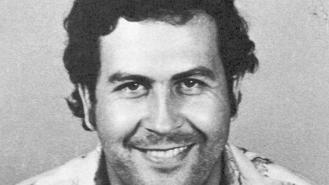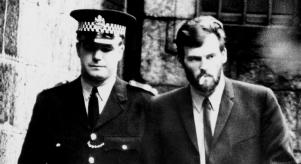
Bad Medicine: Catching New York’s Deadliest Pill Pusher
Former prosecutor Charlotte Bismuth on her new book, Bad Medicine, a startling look into America's opioid crisis.
Bad Medicine: Catching New York’s Deadliest Pill Pusher Charlotte Bismuth’s gripping account of the case of Dr Li, the first doctor in New York State to be convicted for homicide based upon the overdose deaths of his patients. It’s a rare look from a tenacious female prosecutor who reveals a committed but overwhelmed legal system trying to bring a dangerous doctor to justice—even when they’re as callous and deadly as Dr Stan Li.
Dozens of people in Queens, New York lined up outside of Dr Stan Li’s weekend ‘pain clinic’ every weekend to get their Oxycodone, Xanax, and other controlled substances, in exchange for cash. From 2008-2011, Li sold more than 21,000 prescriptions for nearly half a million dollars. During this time, the clinic turned deadly: 16 of Li’s patients died of opioid-related overdoses. Later, just as prosecutors uncovered the first fatalities, one of Li’s addicted patients murdered four innocent people, increasing the urgency of the case.
1. Crime+Investigation: Can you give some background on Dr Li’s ‘pain clinic’ and what were the legal issues involved there?
Charlotte Bismuth: In 2010, New York City was in the throes of the opioid epidemic. Prescription drug abuse was on the rise, and high-purity heroin – which was being sold to oxycodone addicts as a cheaper alternative - was flooding the streets. Emergency room visits were increasing, as were admission rates for substance abuse treatment programs and – sadly – overdose deaths. Little did we know, at first, that many of those deaths were connected.
Out of a tiny basement office in Flushing, Queens, Dr Stan Li was selling prescriptions for oxycodone and Xanax in exchange for cash. He was open only one day a week, on the weekend, but he’d see an average of 70 patients in just one day, and sometimes as many as 100.
Li, however, was protected: he was a doctor and enjoyed the trust of institutions and individuals. When the DEA investigated a complaint against him in 2009, he simply denied it. When a parent wrote him a desperate letter begging him to stop prescribing, he ignored it. Pharmacies continued to issue his prescriptions. And patients continued to die.
Over the course of our 4-year investigation, we identified 16 overdose deaths connected to his practice – and those were only the ones we were able to trace using database records. Many of the pills he sold ended up on the street, and we couldn’t trace them.
Once we realized that Dr Li presented a threat to public safety, we were confronted with the fact that it would be very hard to prove any charges against him. He was a doctor, licensed by the DEA, and therefore authorized to write prescriptions for controlled substances. We couldn’t get an undercover into the office – the doctor was too careful – and we’d have to build a historical case anchored by the testimony of his patients, many of whom suffered from substance use disorder. We’d have to prove that he was selling prescriptions without any medical basis, in some cases recklessly endangering the lives of his patients, and in other cases actually causing their deaths.
And that gets us to the fundamental question: when a patient dies of an overdose, who is responsible? We believed that if the doctor knew that the patient was addicted and taking more than prescribed, he should be held responsible.
2. How many patients did he deal with between 2008-2011 and how profitable was it?
In the span of just 2 ½ years, Dr Li wrote more than 21,000 prescriptions for controlled substances to more than 1,000 patients. More than half of those prescriptions were for oxycodone, which he often paired with Xanax. Dr Li raked in half a million dollars in cash just from operating this pain clinic one day a week – and this was in addition to the salary he received from his day job, as an anesthesiologist in New Jersey. Dr Li had turned his medical license into a cash generator.
3. Can you talk about the deaths that were linked to the clinic?
We began hearing rumours of overdoses during our very first witness interview. Sadly, we uncovered 16 overdose deaths among Dr Li’s patients. It became a source of daily stress: every morning, my team members and I woke up with a knot in our stomachs, hoping there wouldn’t be another one. We created an overdose alert system by working with the local medical examiner and began systematically investigating every death that occurred among his patient population.
Many deaths involved illicit substances in addition to the medications prescribed by Dr Li – unfortunately, there was not much we could do about those. In two cases, however, the causes and times of death were closely linked to Dr Li. Nicholas Rappold was found dead in his car at the age of 21, in September 2010, just three days after buying prescriptions for oxycodone and Xanax from Dr Li. Joseph Haeg, who was 37 years old when he was found dead, just a few days after Christmas in 2009, also had just seen Dr Li a few days earlier; he’d also overdosed on the medications he’d been prescribed. We decided to charge Dr Li with homicide for those deaths.

Equally disturbing, however, were the murders that occurred in June 2011: a patient of Dr Li’s executed four innocent people in cold blood during a pharmacy robbery. He made off with 11,000 hydrocodone pills. We identified the suspect thanks to our investigation records and notified the police: we were devastated when the connection to Dr Li’s office was confirmed.
4.How did authorities first become alerted to Dr Li, what was the role of the whistle-blower?
A brave young man, who’d been a patient of Dr Li’s and survived an overdose, decided that he didn’t want anyone else to get hurt. He called the police – and slogged through 4 years of investigation with us before finally testifying at trial in 2014. Without his bravery, so many more would have died.
5.How did he dodge scrutiny for so long?
One word: trust. Dr Li enjoyed and exploited the trust that physicians enjoy in our society. While his patients – who were suffering from addiction – were considered to be criminals, liars and abusers, he was getting away with homicide.
Truthfully, it also takes a tremendous amount of work, attention to detail, stubbornness and teamwork to get to the bottom of a large, long and complex case. Our team was driven by a sense of justice and by the grief of the families we’d met: we were never going to give up.
6.What Dr Li's motivations do you think?
Li was motivated by greed. He raked in $7,000 a week in cash! There could be no other explanation.
7.How did you become involved with the case?
I received the tip on December 1, 2010, and launched the investigation on my own. After a few weeks, when I realized there might be something afoot, I was paired with Joe Hall, a senior investigator and former NYPD homicide detective. I did the research, he did the fieldwork, and we conducted every interview together. Joe and I saw eye-to-eye on every detail of the investigation and set a course together to shut down Dr Li’s clinic. We both worked almost full-time on the case: it was our obsession.
8.What are the biggest challenges for a prosecutor in cases like this? How did you approach the case?
In this case, one of the challenges was that we had no inside view: there was no undercover detective. We had to track down and obtain the trust of Dr Li’s patients, who could give us insight into his practices, and we had to find a way to shut down his clinic so that there would be no more deaths. In 2011, after the pharmacy murders, we filed charges related to one patient, since that’s what we were able to prove, and then dove into Dr Li’s own medical records. Based on the evidence we obtained from his records and witness testimony, we were able to bring a comprehensive indictment in 2012, charging prescription sales, insurance fraud, reckless endangerment and homicide.
The law itself also set a challenge for us: we had to prove that Dr Li’s prescriptions were written in bad faith and without a medical basis. And most importantly, we had to prove that he’d caused the deaths, even if he wasn’t there when the patient ingested the medication. This was the linchpin of the case: we had evidence that Dr Li KNEW his patients were taking more than prescribed, were suffering from addiction. We were able to prove, ultimately, that he even knew they were overdosing on the drugs he’d prescribed. He consciously disregarded those risks because he wanted the money.
9.Why was it so difficult to stop Dr Li and bring him to justice?
Dr Li, at first glance, wasn’t committing a crime: he was writing prescriptions and charging patients money for visits. Doctors are allowed to do this. We had to pull the veil back and show that his patients were not there for medical conditions; that he knew they were addicted; that he exploited their addictions; that he didn’t care whether they lived or died.
There’s also so much stigma attached to people who suffer from substance use disorder, and they were the victims in this case. After the long challenge of shutting down Dr Li’s clinic, we faced the challenge of building a case that a jury would understand and believe. Ultimately, the jury appreciated the honesty of Dr Li’s patients, whose testimony was blunt and often raw – and they saw through Dr Li’s pretence.
10.What impact does the opioid crisis have on law and order in America?
The opioid crisis has overwhelmed law enforcement – especially now that illicit fentanyl is omnipresent and causing so many deaths. I believe the greatest challenge to the rule of law, however, doesn’t come from people who suffer from substance use disorder or even from the streets: it comes from corporate boardrooms and even now from bankruptcy court. This is where the pharmaceutical companies – especially Purdue Pharma and its owners, members of the Sackler family – have managed to dodge accountability for sparking the crisis. Victims are losing trust in our entire judicial system because they see pharma companies and pharma billionaires walking away with their fortunes intact, while hundreds of thousands of ordinary Americans have died or been incarcerated as a result of the opioid epidemic.
11.What do you hope readers will get from your book Bad Medicine?
We don’t get a lot of stories – at least true stories – about women fighting crime. My entire team fought like hell – alongside an incredibly brave group of men and women who came forward as witnesses – to stop Dr Li. I want my readers to be there alongside us, feeling the stress and vindication as the case unfurls. I believe women will relate to the stories I tell about the workplace, the courtroom and even the crime-fighting: I hope I inspire more women to tell their own stories!
I also hope the book helps to fight stigma and draw attention to the real injustices in the opioid epidemic while offering a story of hope. But most of the messages I receive from readers, out of the blue, referring to the stories of divorce, depression, parenting and resilience that I decided to include as well. This case changed my life and made me realize that we don’t speak openly enough about the struggles we all face: I decided to be honest about my own battle with depression in the book, and that has resonated widely with readers.
12.What’s your favourite true crime book, series or podcast?
I have so many! I love the Die-alogue podcast, with Rebekah Sebastian, to name just one. 'The Staircase' gave me running chills. I loved Michelle McNamara’s 'I’ll be Gone In the Dark,' and mourned her untimely death. Her book was one of the inspirations for mine.
Bad Medicine: Catching New York's Deadliest Pill Pusher by Charlotte Bismuth is published by Simon & Schuster and is available in all good book shops.







